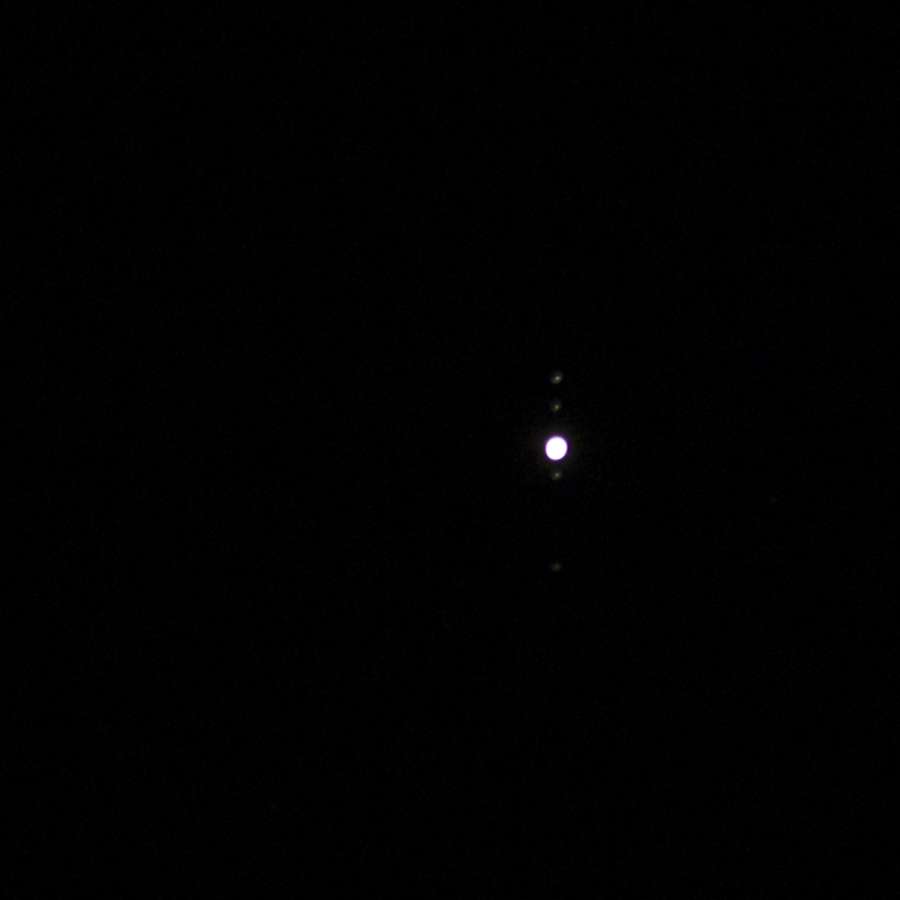Finishing our packing, errands, and picking up a friend from the Emergency Department (A doc friend has a last-minute consultation/delegation) we arrived with our kids, playthings, binoculars, camera, telescope, books and whatever stuff we thought could keep us engaged over the next 24 or so hours.
Early evening as all of us were done with our greetings, were pulled to climb a small tower to catch glimpses of the bird life around us, and as evening fell our eyes shifted upwards towards the clear skies with let us view a lot more celestial objects than the Bangalore city sky allowed us to view.
It had been almost a decade where I seriously had tried photographing a celestial object, and Jupiter was one of the few planets which was providing a clear view from binoculars at that evening. So ended up setting up my tripod, and set up a sufficiently short shutter time of 1/8 of a second, an open aperture at f2.8 and ISO400 for exposure. The settings were bit of a mental math after checking exposure with a test shot.

What you can see here is Jupiter with the Gallelian moons clearly visible. Note this is an extreme crop of a shot taken from a 70-200mm lens (Left with teh mental note to try out/rent/purchase the newer unique budget RF 200-800mm/f6.3-9 and similar lenses for my next opporunity).
So higher the ISO , lower the dynamic range and hence to get colours and more details the ISO needs to remain around the same or be reduced (100 or 50/L for the Canon EOS R5mk2), which means shutte speed needs to be slowed by about 2-3 times to around 1/4 - 1/2 of a second... But as we slow the shutter, can expect trails .. i.e. the position of the planet/star would have shifted from its position in the sky which would then require a mount that moves the camera (or telescope) at a speed equal to that of the earth's rotation (Equatorial mount)
Do check the gallery below for a few more images from my short escape from the daily grind.


